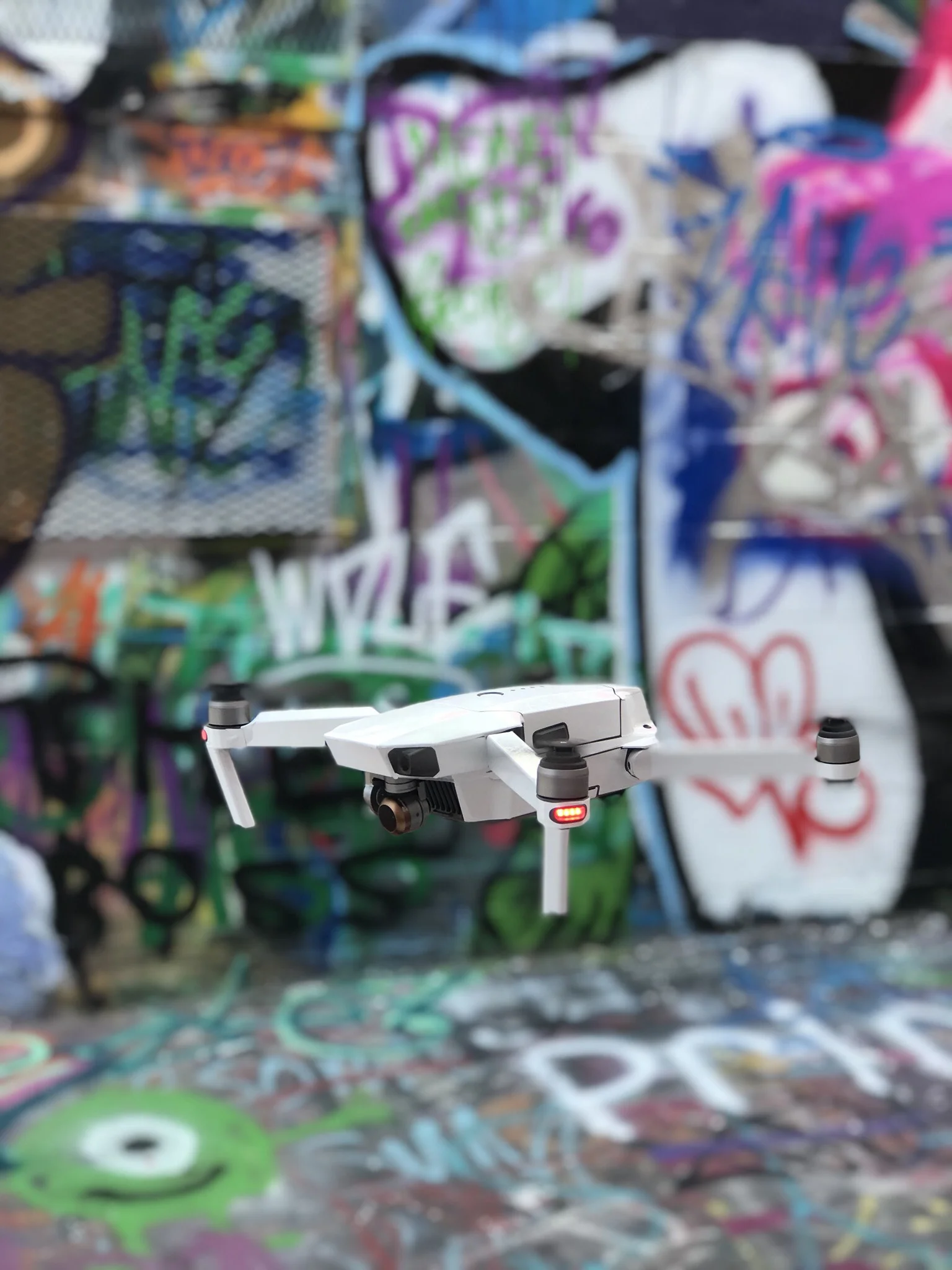The Exposure Triangle for Drones Defined
ISO - this is the amount of light sensitivity for the camera’s sensor
As ISO value increases, the sensor’s sensitivity to light also goes up
Aperture ( P4P & I2 Cams) - the amount of light be allowed in the camera
This manual setting feature has an inverse relationship. For example when your value is f10 a minimal amount of light will be let in while f5 allows double the amount of light
High aperture (f11) number is best for depth of field
Medium value (f6-7) is good for a sharp photography
Low number (2-4) could be used for low-light conditions or night photography. At the lowest aperture number, the greatest amount of light is let in and depth of field is minimal
Shutter Speed - light gathered by the sensor
The longer the shutter is open, the more light into the sensor
When using a drone, shutter speed should never be sub 1/30-1/50 (of a second)
Personal sweet spot for aperture is 1-2 seconds
Exposure Triangle Diagram from PP
Personal recommendations normal flying conditions
f/8 aperture
1/250 shutter
100-150 ISO
What are ND Filters?
ND filters reduce the amount of light entering the camera’s lens, simply put. I use these filters to prevent the consequences of overexposure occurring when taking an aerial photo.
Standard ND Ratings
ND4, ND8, ND16 & ND32, CP
The number associated with an ND filter indicates that how much light enters the lens in terms of a fraction.
- ND4 reduces light by 1/4. An ND4 filter can reduce 2 stops of light, allowing you to slow the shutter speed from 1/100s to 1/25s.
- ND8 reduces light by 1/8. An ND8 filter can reduce 3 stops of light, allowing you to slow the shutter speed from 1/200s to 1/25s.
- ND16 reduces light by 1/16. An ND16 filter can reduce 4 stops of light, allowing you to slow the shutter speed from 1/400s to 1/25s.
- ND32 reduces light by 1/32. An ND32 filter can reduce 5 stops of light, allowing you to slow the shutter speed to 1/60s.
- CP - can reduce up to 1.6 stops of light, normally used when shutter rates are not able to be manipulated
- ND4-16 specs provided by Polar Pro
When to use ND/CP
CP - used in many conditions to reduce glare when the shutter speed is not controllable
ND4 - dawn and dusk applications
ND8 - cloudy or mostly cloudy situations
ND16 - partly cloudy or mostly sunny
ND32 - very bright sunny conditions, I use for snow and water
Video Recommendations
I believe the video settings are dependent on the camera. For example, the Mavic Pro is rated to shoot 4k @ 30fps, but does it? I never shoot in anything past 1080p at 30fps because the camera isn’t writing true 4k files onto your sd card. Most of us are using the media captured for social media and other web purposes anyways, so there is no point IMO. A YouTube video titled “Towson University Aerial Tour in 4k” is bogus. Unless you’re watching YT to Vimeo through a modern TV with an extreme amount of bandwidth. Of all the clients I’ve had over the years, less than ten have asked for actual 4k files. Most request 1080p or 2.7k (UHD) which is what you’ll view through Xfinity or Fios. However, the more prominent named clients will want 4k so it's essential to use a drone that will process that quality if you're a commercial remote pilot. There were a few instances when I flew the whole time capturing video with the end user having intentions of pulling still images. Since day one, I have always relied on Polar Pro ND filters. While DJI has their line, I have found Polar Pro filters provide a better final edit. Besides, if you're looking for a more budget-friendly brand; Neewer is pretty good, too.
Never have AWB on auto...Ever!
Settings for P4P, X5S & X4S
Cinelike - P4P ( For Post Users / no processing)
Sharpness -1/0
helps with aliasing and moire
Contrast -3/0
encourages dynamic range
Saturation -1/0
decreases Artifacts - blocking areas
Settings for DJI Mavic Pro
Mavic Pro with Polar Pro ND
Cinelike - Mavic Pro ( For Post Users / no processing)
Sharpness -2/0
Contrast -2/0
Saturation -1/0
How to change your settings in the DJI GO 4 App
Go to style -> custom -> change to your custom settings
Grid -> Grid Lines (shows if the horizon is level quickly)
These are only recommendations or guideline per say. ND filters and camera settings are just like working out, one program is not right for everyone. Half of the fun of aerial media is experimentation and playing with these filters.
Contact us with any questions you may have about ND filters and drones. As always, happy flying!





